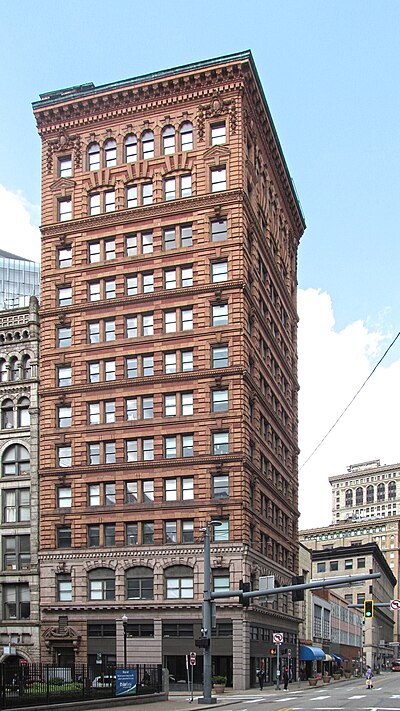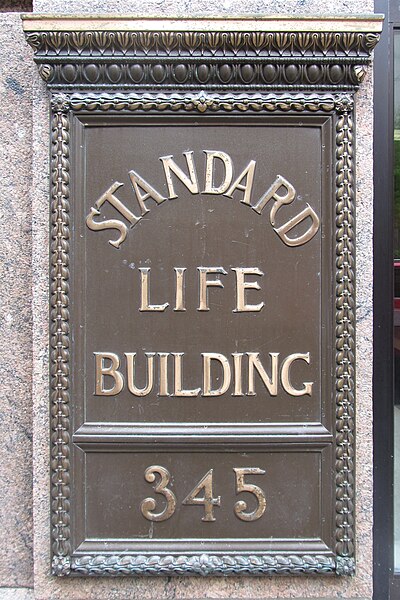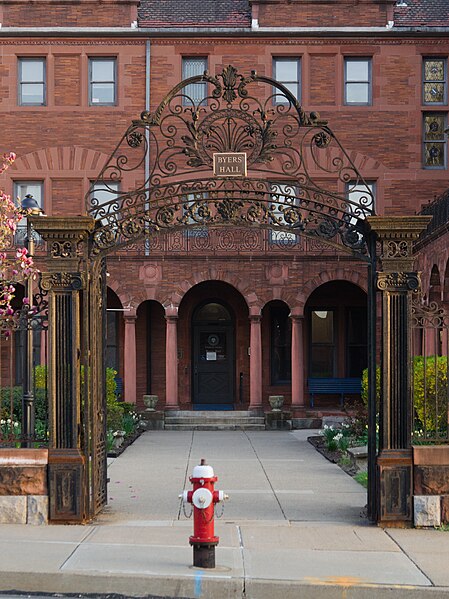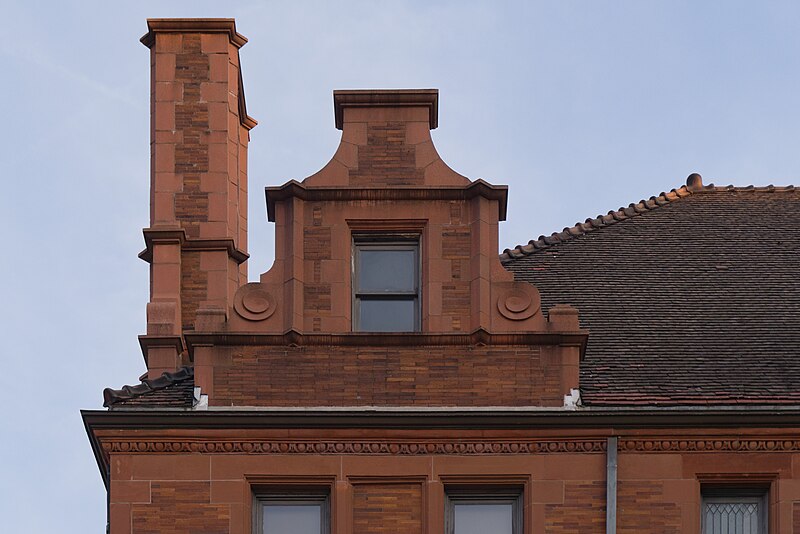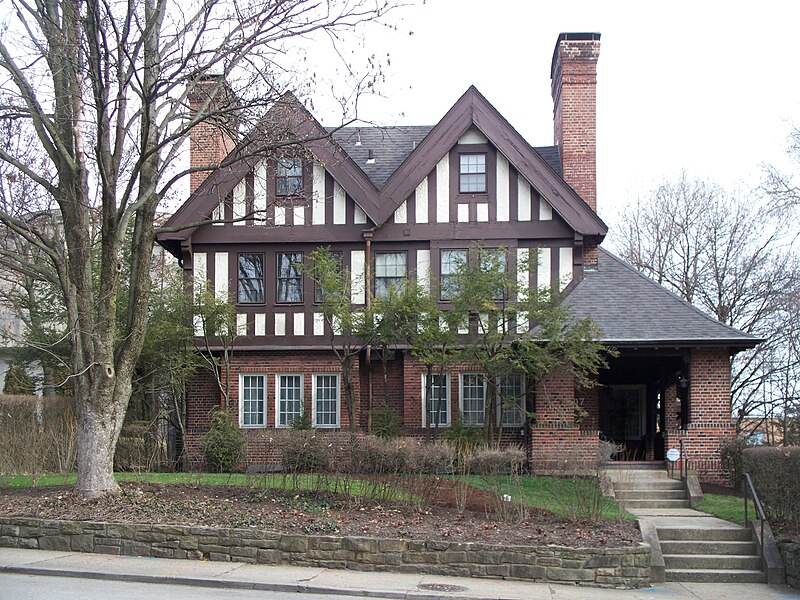
Built in 1916, the Wilkinsburg Masonic Temple was designed by Alden & Harlow. Mr. Alden had already been dead for eight years, but his famous name was kept at the head of the firm; Howard K. Jones, whose name was not added to the firm (as “Alden, Harlow & Jones”) until 1927, was doing much of the design work by 1916, and may have had a large hand in this building.
It’s a curious structure, two-thirds basement. Often lodge halls were put on upper floors to provide rentable storefronts on the ground floor that would pay for the building, but that is obviously not the case here. Perhaps the reason may be sought in pure symbolism. Whatever goes on in this building (which the uninitiated are not permitted to know) is so lofty that even the members must ascend through two and a half levels of basement before they can reach the main event.
A full-page photograph in the Architectural Record from 1925 shows us that the front of the building has not changed in any noticeable way, except for the new doors and windows:

Unlike some other landmark buildings in Wilkinsburg, this one has been preserved by new occupants, the Ahmadiyya Muslim Community Mosque, who clearly love the building and keep it in sparkling condition. Even the inscription and the cartouche have been attractively covered, not obliterated, by the Muslim community.

Comments




















